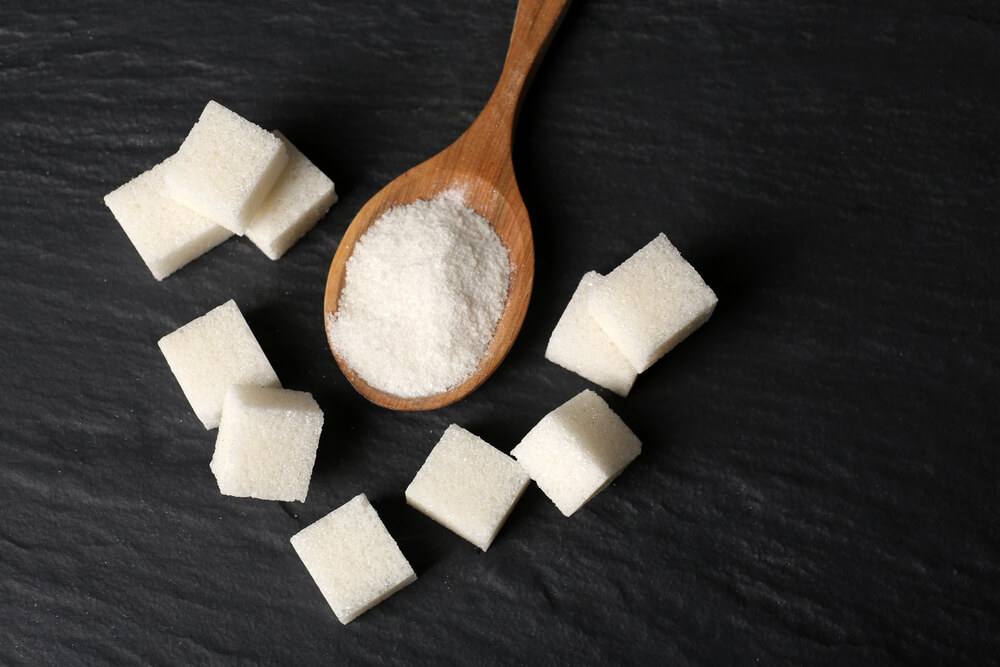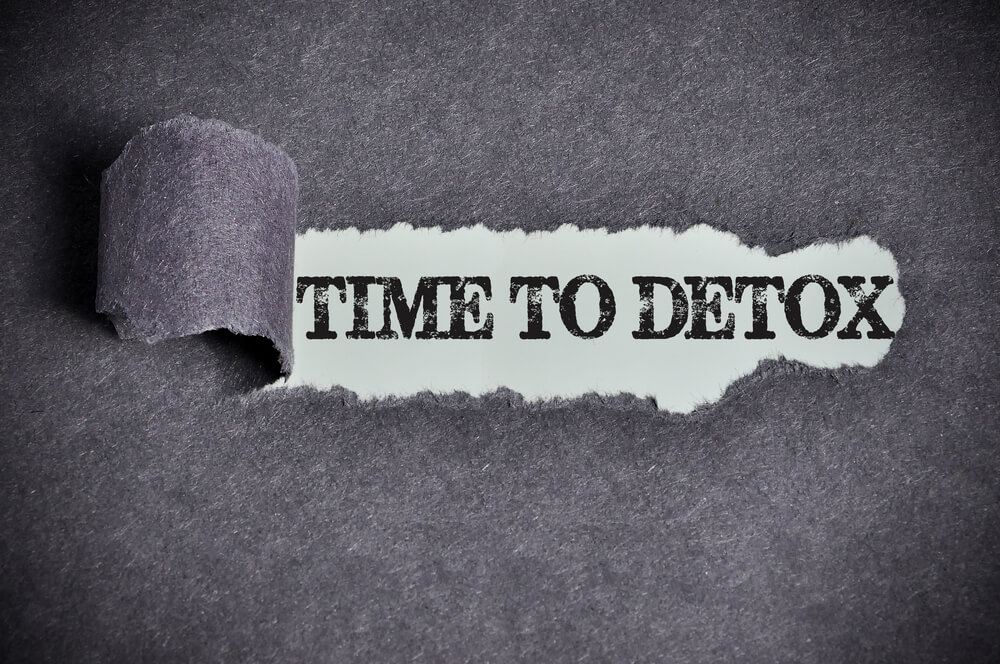We all have that friend. After putting in hard time at the gym, the first thing they do is head to the vending machine and start snacking on a giant candy bar. Today we are going to explore sugar withdrawal.
Sure, it has some solid protein in it and even carbs to help the muscle recovery process. But all of the sugar and calories may just nullify all of the reps and cardio done at the gym. Sugar addiction can be a real thing to deal with.
Shouldn’t you just cut sugar out completely?
And what happens to your body during sugar withdrawal?
We have all the answers for you right here.
What is Sugar?
It may seem like a simple question and answer, but it actually goes a bit more in-depth than you might realize. Sure, you go to the grocery store and purchase a big bag of sugar. If you’re making something specific, perhaps you grab some brown sugar or some other variation.
Sugar is just sugar, which comes from sugarcane, right?
Well, yes and no (although not all sugar comes from sugarcane). Sugar in itself is actually a soluble carbohydrate. Carbs are broken down into both simple and complex. Complex carbs take longer for the body to burn and absorb, which is why complex carbs are good for both giving you energy before a workout and after, to help repair your muscles.
Sugar is a simple carb.
There are different kinds of sugar carbs as well.
These are broken down further into glucose, fructose, and galactose. The sugar you pour into your coffee(often known as sucralose) or add into the batch of Christmas cookies is a disaccharide of both fructose and glucose. So, the simple table sugar found in sodas is similar to the carbs found in your wheat bread. The only real difference is one is complex (the wheat bread) and one isn’t.
Galactose is a sugar not as commonly found in nature. It is found in dairy, but few other natural foods so it does not receive as much attention as the other two forms. It isn’t as stable as glucose, so it breaks down easily and may be absorbed into the body faster. It has more connection with lactose issues than with insulin problems, although over consumption may increase the risk of kidney cancer (The Lancet, 1989).
What Does Sugar Do to the Body?
As mentioned above, there are three different kinds of sugar (glucose, fructose, and galactose).
Each of these kinds of sugar has a slightly different impact on the body.
The main purpose of the simple carbs is to provide the body with energy, which is delivered to the body through the bloodstream. While in the bloodstream though, each kind of sugar can bring about slightly different results.
In the glucose form, sugar is absorbed into the body through the walls of your small intestine. This, in turn, tells your pancreas to begin insulin production. Insulin, in turn, absorbs the glucose from the blood stream and then delivers it to the different cells in your body that require an energy source. Delivering energy to your body is important, especially in a workout.
Have you ever shown up to the gym but have felt completely spent far too early?
Perhaps you can’t lift what you normally do or your legs are dead tired early into cardio?
This usually is usually because your body doesn’t have enough energy to run on, which likely means a lack of protein and carbs in the body to burn. Due to this, having some glucose in the body can be beneficial.
With that said, the vast majority of items with glucose simply has too much of the glucose, which floods the body. There simply is not enough insulin to catch all the sugar, so to grab the rest, your body begins to produce serotonin.
You know the serotonin supplement some people use to help with sleep?
Not to be confused with melatonin though…
Yup, this hormone has the same effect and it is why you’ll experience a sugar crash.
Additionally, as more insulin is required to grab the glucose, it blocks the production of a hormone called leptin. This is a hormone that tells your body that you’re full, which is why when a food item has sugar in it you tend to eat more than normal (which in turn has an effect on weight gain). With all of the insulin grabbing sugar and delivering it through the bloodstream, it increases the amount of insulin running to your brain. Research suggests this may lead to the development of Alzheimer’s disease due to the improper chemical balance in your brain.
And as for the remaining insulin that isn’t absorbed by the body for energy?
It remains in the bloodstream, which can also lead to the development of diabetes.
Much like glucose, fructose is also absorbed into the small intestine walls and into the bloodstream.
However, it is your liver that metabolizes the fructose form of sugar. The liver though is not designed to process a high level of fructose. When it becomes overwhelmed it will begin to develop fat to grow in and on the liver, which will turn into something known as “nonalcoholic fatty liver disease.” When you increase the amount of fructose your body absorbs, your body will drop its HDL level, which is what you refer to as good cholesterol.
This can cause your bad cholesterol to take over, increasing your risk of cardiovascular disease and stroke.
All the while, in order to help out with the liver metabolizing the fructose, additional insulin is brought in to help. This may overcharge your pancreas and possibly send inflammation throughout your entire body, increasing the chance of diabetes (Women’s Health, 2014).
Sugar Withdrawal Symptoms
After going through everything your body does to process sugar and how it can negatively affect your body, you may want to begin and cut sugar out of your diet.
But what happens when you go from eating sugar to completely cutting it out (or cutting out as much processed sugar as you can)?
When your body becomes accustomed to receiving a specific chemical or item on a regular basis, it begins to form a dependency on it.
This is very similar to forming a dependency on a drug. Even regular, heavy coffee drinkers may go through withdrawals should they quit drinking coffee.
But what happens to your body should you decide to quit sugar?
Realistically it depends.
For starters, going through any kind of sugar withdrawal depends on how long you’ve been consuming large amounts of sugar and what your daily consumption is. If you only really add sugar to your coffee and then decide to go without, the only part of your body affected by this change (at least in terms of reactionary) will likely be your taste buds. Cutting this sugar out is good, but you won’t feel any withdrawal symptoms.
According to Mental Healthy Daily (2017), the average individual in the United States consumed around two pounds of sugar over the course of the year back in the early 1800s. Currently, the average U.S. citizen eats around 152 pounds of sugar every year, which boils down to about three pounds of sugar in a week. So, chances are if you’re looking at cutting sugar, you probably will remove a considerable amount from your diet. This can lead to an assortment of different withdrawal symptom possibilities.
Some of the symptoms you might experience include anger, appetite changes, anxiety, depression, sudden dizziness, fatigue, headaches, the cravings for sugar, insomnia, mood swings, irritability and weight changes.
As you go through the list of side effects and symptoms, you’ll likely notice these symptoms are very similar to that of many other drugs. Your body needs to change how it intakes food and it is suddenly no longer receiving something it has become dependent on.
There are some ways to help reduce theses withdrawals though and reduce the impact cutting sugar out of your system has.
What Can You Do About Sugar Withdrawal?
Sugar withdrawals can prove difficult to deal with on your own.
However, there are some options that can help improve the symptoms and how strong each hits you.
For starters, the vast majority of people who quit sugar go cold turkey. After all, ridding your body of as much sugar at once is important. However, it is also what causes the extreme side effects. If you cut sugar out slowly in a tapering method you may be able to avoid all of these kinds of side effects. If after a day of going cold turkey the side effects are extreme and make it difficult to function at all, go to the tapering method.
The length of time it takes for withdrawal symptoms stemming from going cold turkey can range from a few days to nearly a month. A person’s sensitivity to dopamine is what can cause the extreme symptoms. When cutting sugar out of your body, you also may experience a sudden drop in your dopamine levels (this is only temporary).
If you do decide to go cold turkey, there are some ways you can additionally alter your diet to help cut down on the levels of your side sugar withdrawal symptoms. First, you should consume lean protein. This includes turkey, chicken and nearly any kind of seafood (protein, in general, is good for this, but the leaner the protein you go with the better). Fruits can help as well. Any kind of berry, such as blueberries and raspberries are excellent here. Your body will begin to crave glucose and the sugar you have cut out of the system.
You know that feeling you may get sometimes if you work out hard for a long time (maybe go for a four-hour bike ride in the sun) and then, for whatever reason, you crave something sweet, even if you’re not much of a sweet tooth?
That is your body craving glucose and the quick, simple carbs. Berries are not extremely high in simple carbs, but enough to pack antioxidants (which can help reduce symptoms further) while also cutting the sugar cravings as well (Mental health Daily, 2017).
What Not to Do
It is important to not just swap out regular sugar for sugar replacements.
This is because even though fake sugar is a different chemical compound, it can have the same effect on the brain (this is why people who drink a lot of diet sodas don’t actually drop the pounds. They think they are being healthier but the fake sugar causes them to end up eating more calories throughout the day, simple it’s junk food).
So, while it may seem like a temporary solution to your sugar intake problems, you can’t switch to sugar substitutes. Just stick with the natural fruits.
How to Taper Off
There really is no one right way to taper off your sugar intake.
If you eat very little sugar during the day it may not be a problem at all. If you’re just looking to cut small things out like sugar in the coffee, consider going with a tea or switching to cinnamon instead of sugar (that’s even great for the metabolism). If, however, you have a large amount of sugar, cut small things out every week.
Switch from white bread to wheat bread, cut out the artificial simple carbs every bit, and you’ll start to see the benefits of dropping sugar without the major withdrawal symptoms.
Conclusion
When it comes to being the healthiest person you can be, limiting the amount of sugar you intake is important.
Now, having the occasional bowl of ice cream is more than fine, but large amounts of sugar intake can lead to serious health complications. When cutting cold turkey, you might experience some withdrawals, which you can either fight through or you can go to a taper method.
Whatever you decide to do, if you want to cut sugar out of your diet you are making the right choice, and you can be successful at cutting it out.
-Terry Asher
Terry Asher
Latest posts by Terry Asher (see all)
- Better Family – Product Review Liquid Daily 2 oz - Dec 16, 2024
- Post-Workout Recovery: The Key to Optimal Performance - Nov 25, 2024
- Pre-Workout Supplements – Everything You Need To Know - Nov 18, 2024
















[…] it is consumed and its absorbs its own weight in water. Foods high in fiber help slow your body digestion of sugar which beats cravings and keeps you feeling full longer. High-fiber diets are linked to a longer […]
[…] down on both, one you realistically need to avoid all together. Refined carbs are made up of simple sugars. With refined carbs almost all of the nutrients have been stripped away, leaving you with only […]
[…] down on both, one you realistically need to avoid all together. Refined carbs are made up of simple sugars. With refined carbs almost all of the nutrients have been stripped away, leaving you with only […]
[…] to step back and look at your diet you might discover you’re consuming a rather large amount of sugar. As a teenager it’s pretty easy to grab a soda from the vending machine in school, snack on some […]
[…] to step back and look at your diet you might discover you’re consuming a rather large amount of sugar. As a teenager it’s pretty easy to grab a soda from the vending machine in school, snack on some […]
[…] make sure to avoid adding in cream or sugar. If you do you’ll end up spending most of your time at the gym burning off the calories from what […]
[…] down on both, one you realistically need to avoid all together. Refined carbs are made up of simple sugars. With refined carbs almost all of the nutrients have been stripped away, leaving you with only […]
[…] that is cream based, such as ranch, is terrible for you. Even more BBQ sauces are loaded with sugar. Instead, you’ll want to use a salsa, hot sauce, or a vinegar based salad dressing. These are low […]
[…] primarily based, comparable to ranch, is horrible for you. Much more BBQ sauces are loaded with sugar. As an alternative, you’ll wish to use a salsa, scorching sauce, or a vinegar primarily based […]
[…] brad, for example (especially the plastic-wrapped white bread) has a surprisingly high amount of sugar in it. Cereal is another food item that can have a large amount of sugar in it. Basically, if there […]
[…] brad, for example (especially the plastic-wrapped white bread) has a surprisingly high amount of sugar in it. Cereal is another food item that can have a large amount of sugar in it. Basically, if there […]
[…] candy bar to reward yourself for spending an hour at the gym. Have a protein bar instead. Look for low sugar, moderate carb and ideally high protein foods to eat a few hours before an evening […]
[…] candy bar to reward yourself for spending an hour at the gym. Have a protein bar instead. Look for low sugar, moderate carb and ideally high protein foods to eat a few hours before an evening […]
[…] candy bar to reward yourself for spending an hour at the gym. Have a protein bar instead. Look for low sugar, moderate carb and ideally high protein foods to eat a few hours before an evening […]
[…] candy bar to reward yourself for spending an hour at the gym. Have a protein bar instead. Look for low sugar, moderate carb and ideally high protein foods to eat a few hours before an evening […]
[…] candy bar to reward yourself for spending an hour at the gym. Have a protein bar instead. Look for low sugar, moderate carb and ideally high protein foods to eat a few hours before an evening […]
[…] coffee can do. And yes, we do mean black coffee. Don’t be pouring copious amounts of cream and sugar into it. It’s not going to do your workout and exercise any good if you’re adding 200 calories […]
[…] coffee can do. And yes, we do mean black coffee. Don’t be pouring copious amounts of cream and sugar into it. It’s not going to do your workout and exercise any good if you’re adding 200 calories […]
[…] found that the average American had consumed over 22 teaspoons or almost half-a-cup of added sugars per […]
[…] found that the average American had consumed over 22 teaspoons or almost half-a-cup of added sugars per […]
[…] found that the average American had consumed over 22 teaspoons or almost half-a-cup of added sugars per […]
[…] found that the average American had consumed over 22 teaspoons or almost half-a-cup of added sugars per […]
[…] declaration in 2009. data on American from 2001 to 2004, scientists discovered that the average sugars had actually taken in over 22 teaspoons or practically half-a-cup of […]
[…] found that the average American had consumed over 22 teaspoons or almost half-a-cup of added sugars per […]